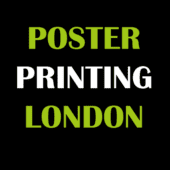How to Do a Poster Presentation: A Comprehensive Guide
A poster presentation is an effective way to communicate your research findings or project outcomes visually and concisely. Whether you’re a student presenting at a conference or a professional showcasing your work at a seminar, a well-crafted poster can make a significant impact. Here’s a detailed guide on how to create and deliver a compelling poster presentation.
1. Understanding the Purpose
The primary goal of a poster presentation is to convey your message clearly and attractively to your audience. It should:
- Summarize your work succinctly.
- Engage viewers and invite discussion.
- Serve as a visual aid during your presentation.
2. Planning Your Content
a. Know Your Audience
Understanding your audience’s background and interests will help tailor your content appropriately. Use language and concepts that they will easily grasp.
b. Structure Your Information
Organize your poster into clear sections, typically:
- Title: A concise and informative title.
- Introduction: Background information and the significance of your work.
- Objectives/Aims: What you set out to achieve.
- Methods: How you conducted your research or project.
- Results: Key findings presented with visuals.
- Conclusion: Summary and implications of your results.
- References: Key sources cited in your work.
3. Designing Your Poster
a. Layout
- Use a logical flow: typically, top-to-bottom or left-to-right.
- Ensure there’s enough white space to prevent clutter.
- Balance text and visuals to maintain viewer interest.
b. Visuals
- Incorporate graphs, charts, and images to illustrate your points.
- Use high-resolution images and clear, legible fonts.
- Color-code sections to distinguish between different types of information.
c. Text
- Keep text concise; use bullet points for easy reading.
- Use a large font size (at least 24-28 points) for readability from a distance.
- Highlight key points using bold or color.
4. Creating the Poster
Use design software like Adobe Illustrator, PowerPoint, or specialized poster design tools. Ensure your poster meets the size specifications provided by the conference or seminar organizers.
5. Preparing for the Presentation
a. Practice
- Rehearse your speech, focusing on clear and concise delivery.
- Time your presentation to stay within any given limits.
- Prepare to answer questions; anticipate possible queries and rehearse your responses.
b. Engage Your Audience
- Greet viewers and offer a brief overview of your poster.
- Use the poster as a visual aid, pointing to sections as you explain.
- Encourage questions and be prepared to discuss your work in more detail.
6. On the Day of Presentation
a. Set Up Early
Arrive early to set up your poster. Ensure it is displayed securely and looks professional.
b. Body Language
- Stand beside your poster rather than in front of it to avoid blocking the view.
- Maintain eye contact and smile to engage your audience.
- Use open and confident body language to convey enthusiasm and expertise.
c. Handling Questions
- Listen carefully to questions and respond thoughtfully.
- If you don’t know an answer, it’s okay to acknowledge this and offer to follow up later.
Conclusion
A successful poster presentation combines effective visual design with clear, concise communication. By planning your content, designing your poster thoughtfully, and engaging with your audience confidently, you can make a strong impression and effectively share your work. Remember, practice and preparation are key to delivering a compelling and memorable presentation. With these tips in mind, you’re well on your way to mastering the art of poster presentations.
